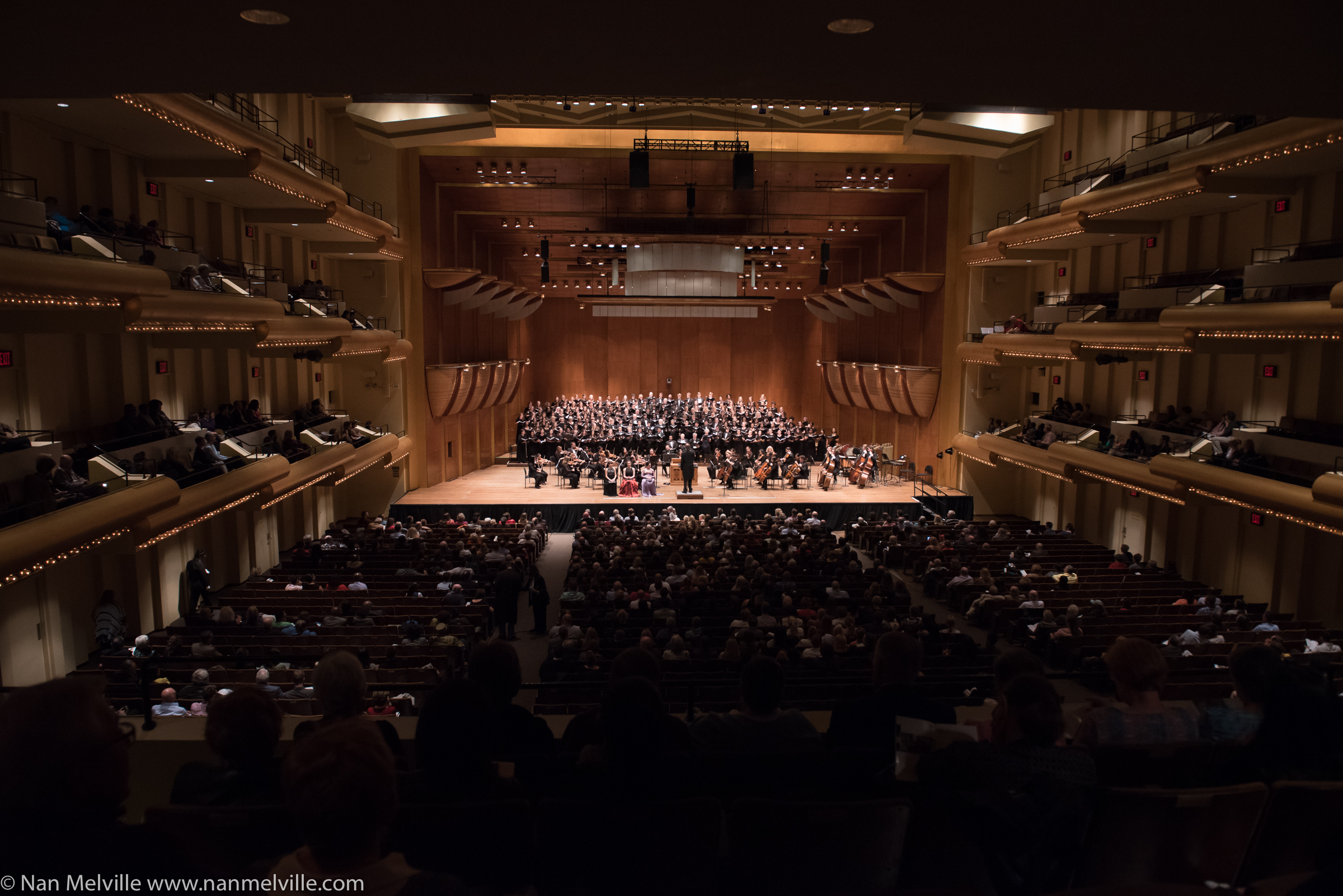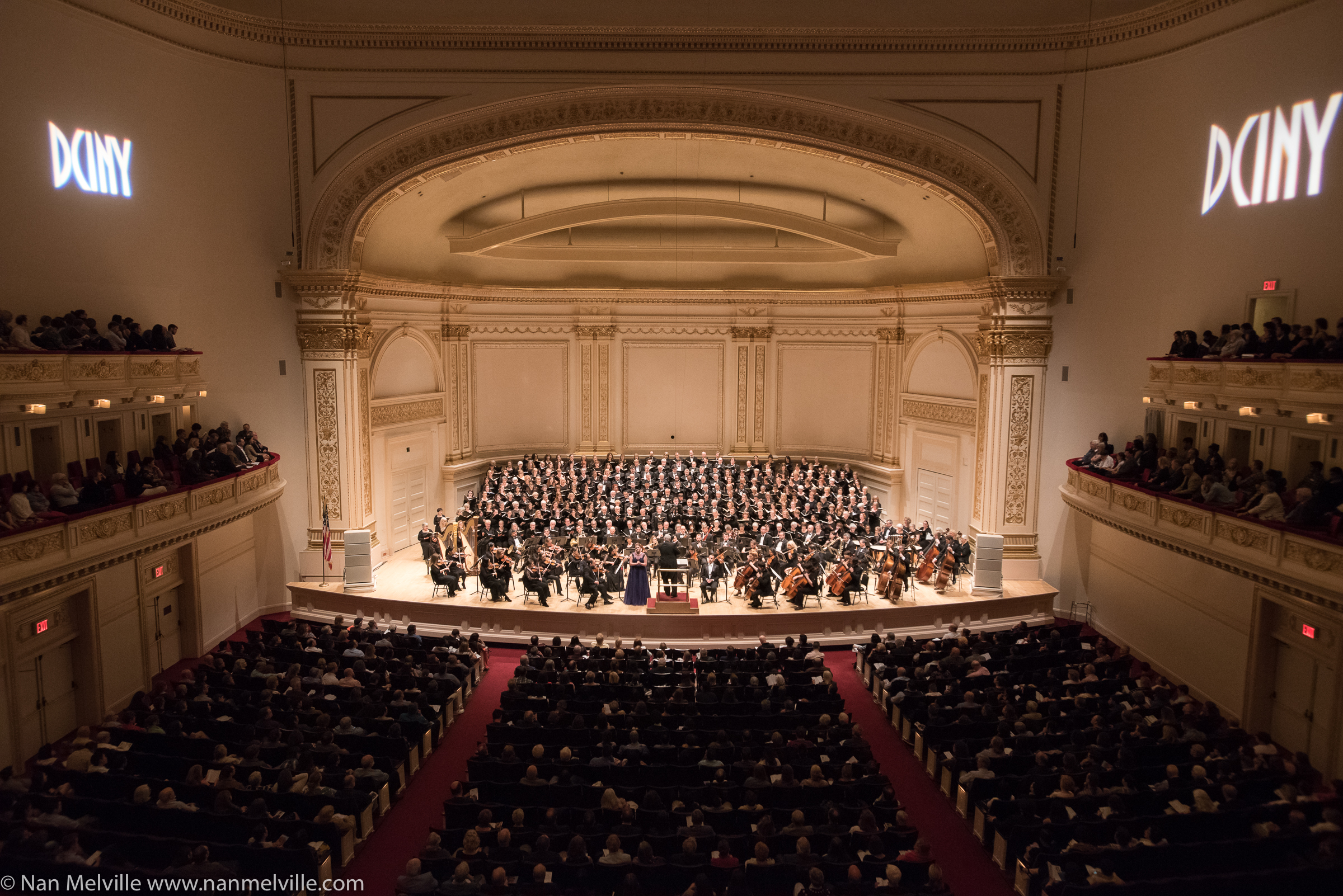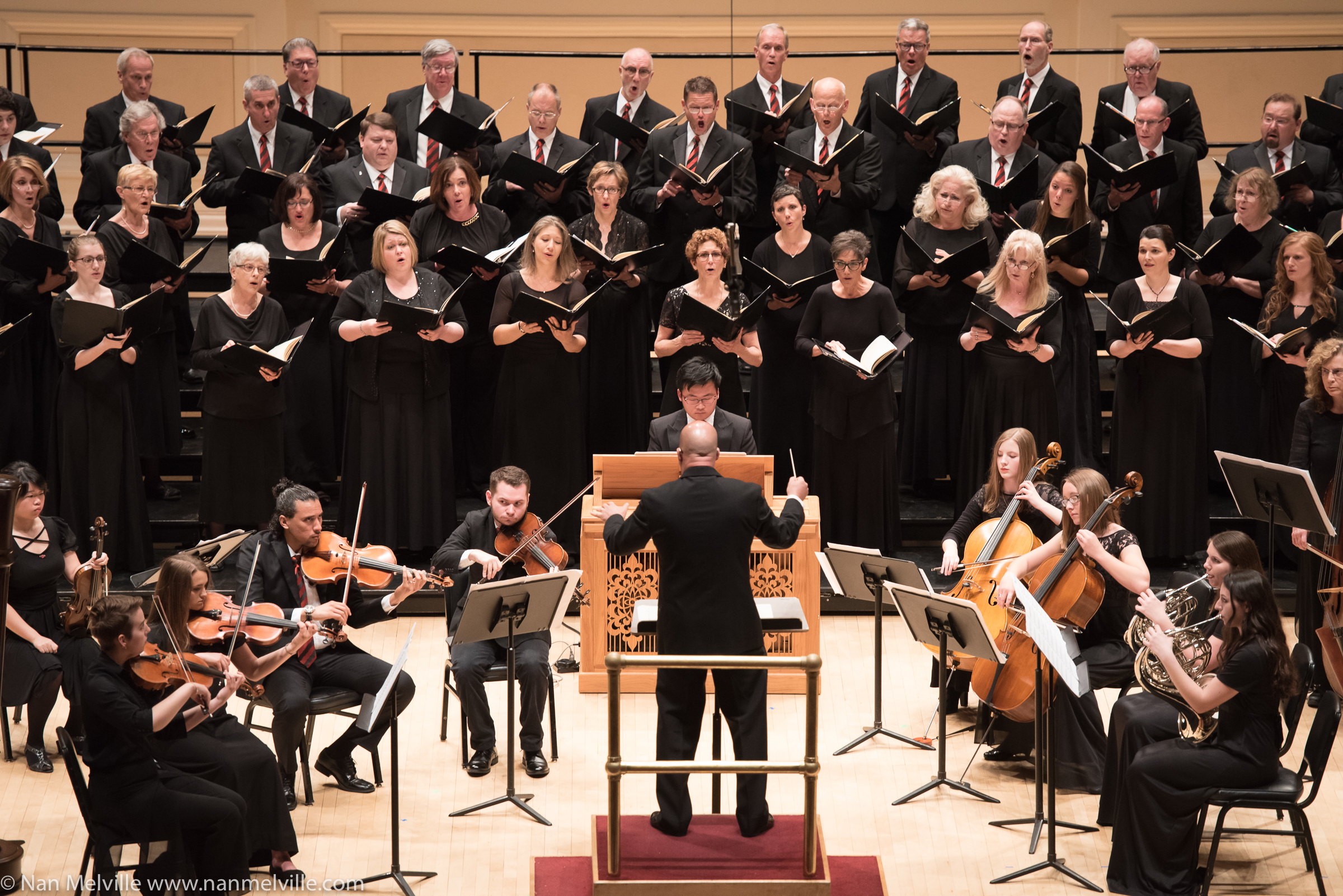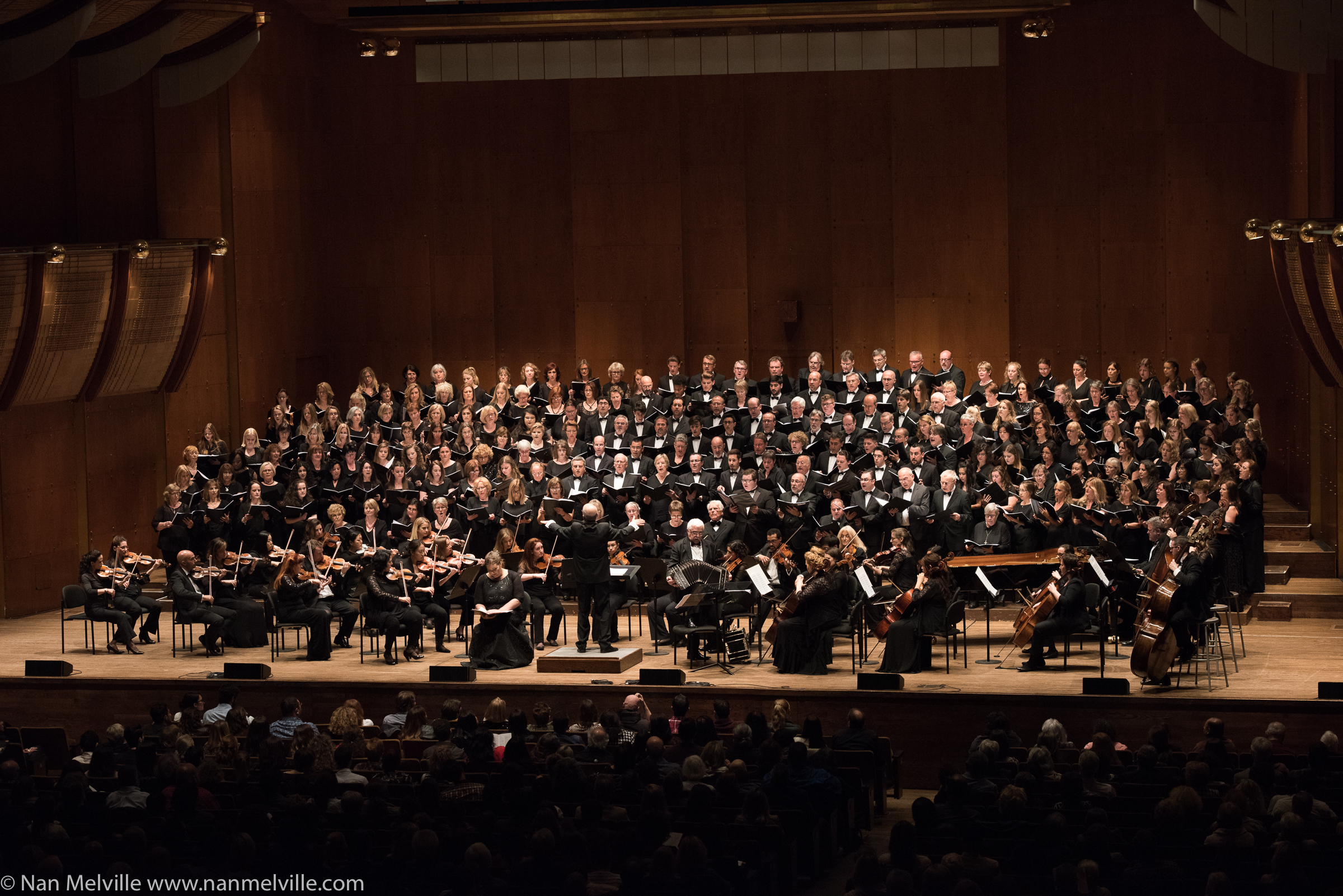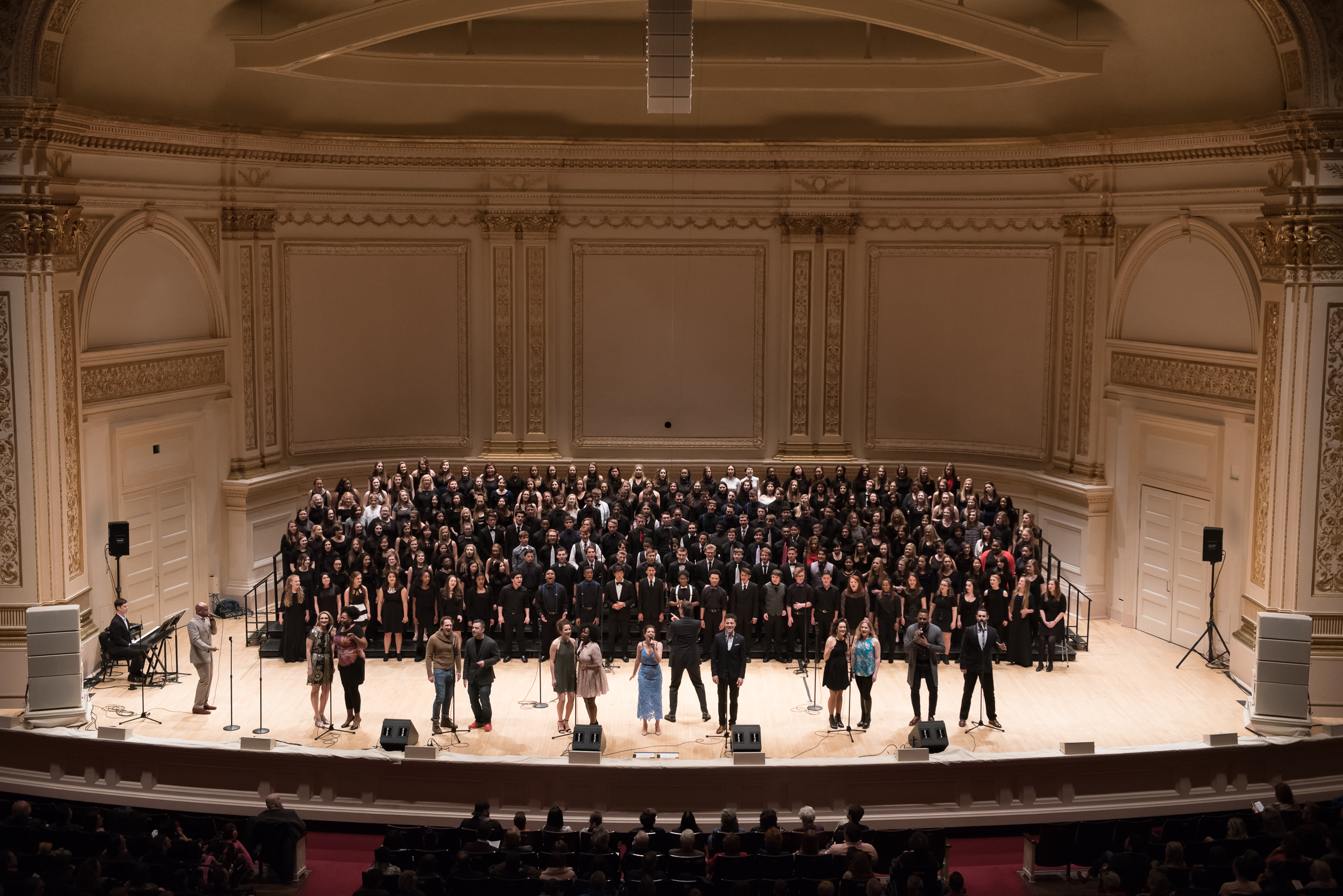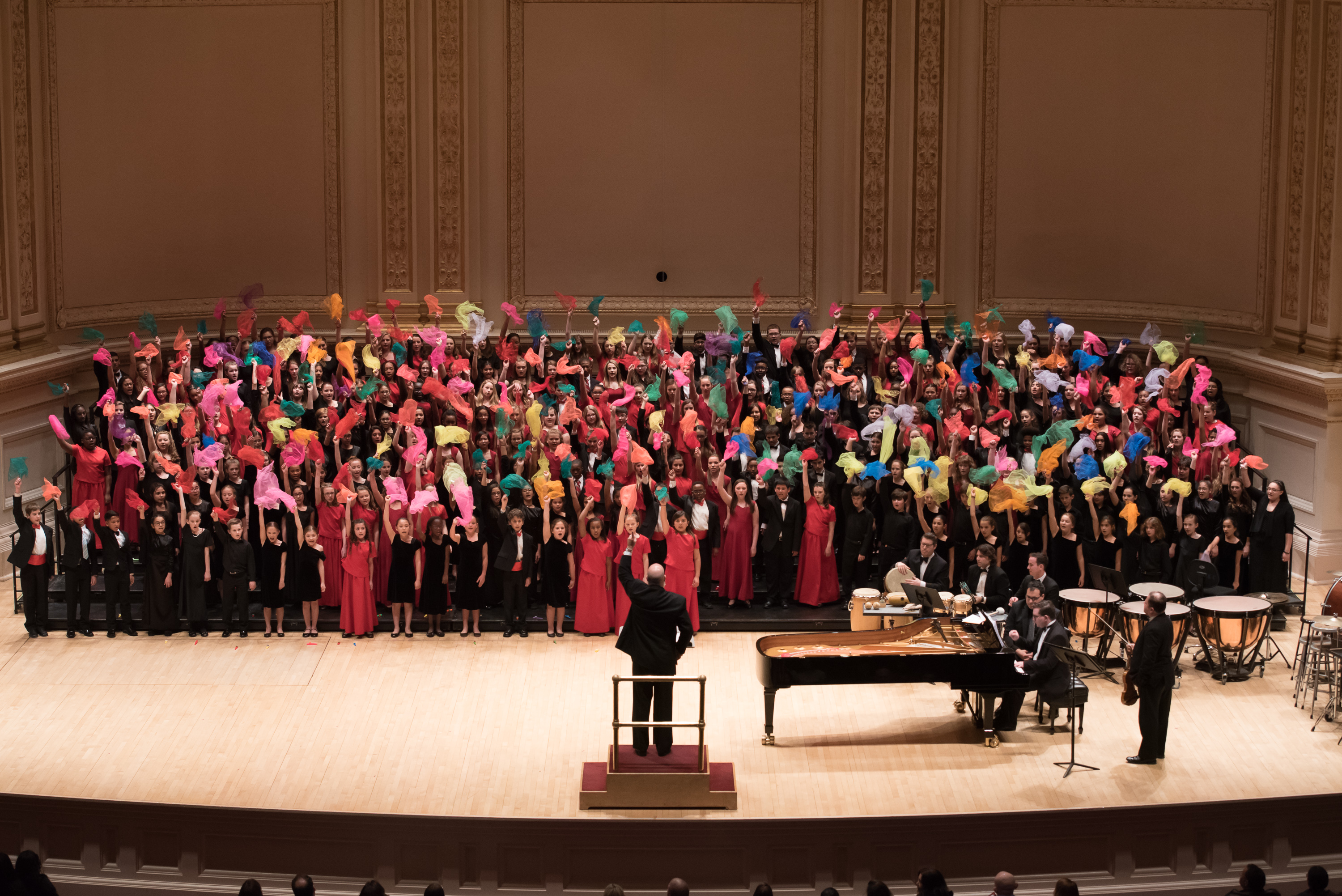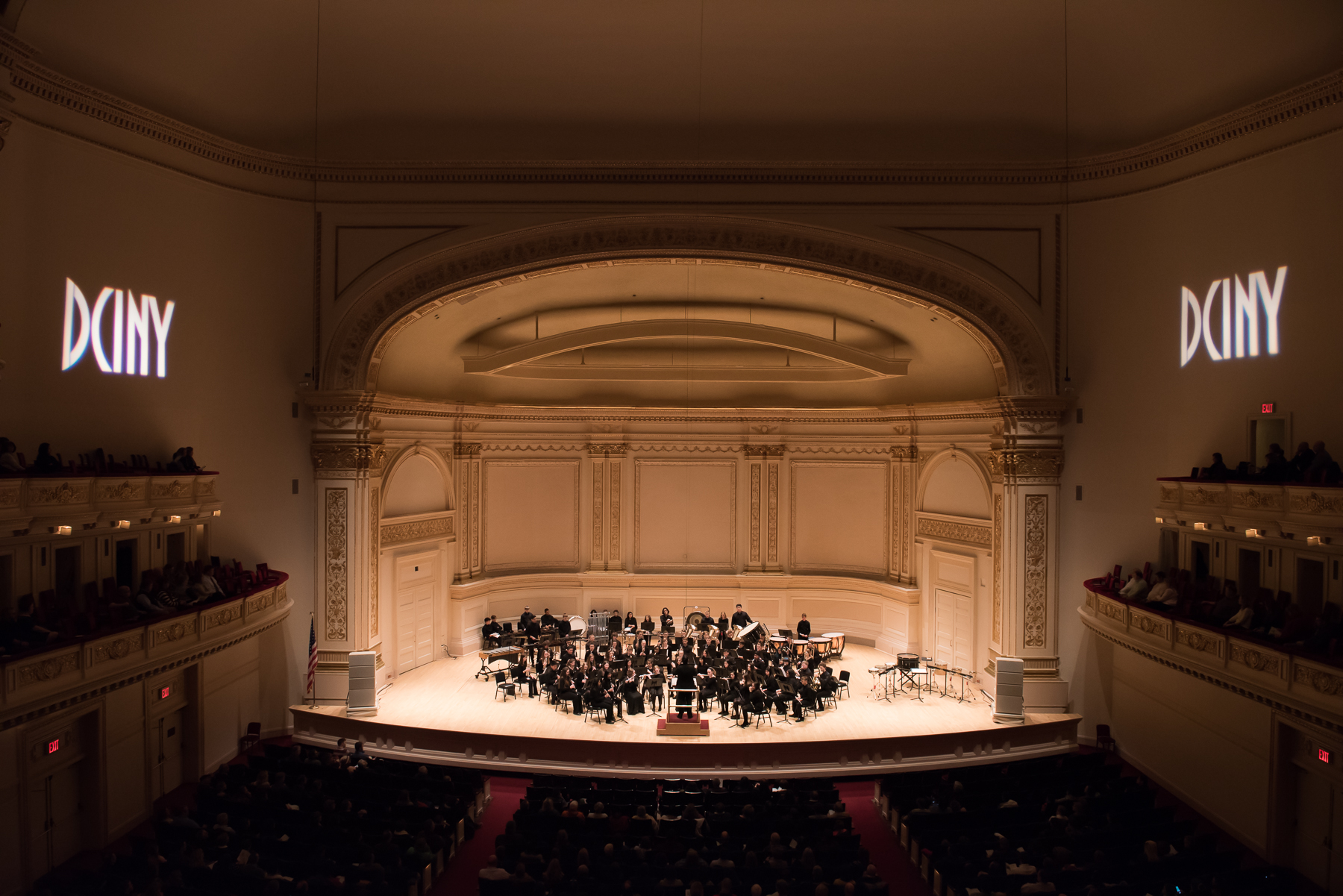Distinguished Concerts International New York (DCINY) presents With Strength & Joy
William C. Powell, Guest Conductor
Meredith Lustig and Katherine Polit, sopranos; Jessica Grigg, mezzo-soprano
Pepper Choplin, Composer/Conductor
Distinguished Concerts Orchestra and Distinguished Concerts Singers International
David Geffen Hall at Lincoln Center, New York, NY
May 29, 2017
Distinguished Concerts International New York’s (DCINY) Memorial Day concert featured a musical amuse-bouche before the concert (and during intermission): “Amazing Grace,” and patriotic, folk, and march music played by the Patriot Brass Ensemble in an upper-right balcony. This gave the event the aura of “a small town in New England,” to be Ivesian about it.
We have composer Alfredo Casella to thank for the revival of Vivaldi’s Gloria, which took place only in 1939. It seems as though it has “always” been there, so iconic is its place in our concerts and sacred celebrations. I will confess to being apprehensive about the use of a large choir in the Vivaldi. There is no tradition of gigantism where Vivaldi is concerned (as there is, for instance, in Handel performance in England). However, I am delighted to report that the performance was absolutely transparent despite the huge choir. The excellent conductor William C. Powell must surely bear most of the responsibility for this: his motions were simple, yet always laser-precise, and he got what he wanted from the group. The second movement Et in terra pax was intensely expressive from the choir.
All three soloists were perfectly cast for their roles: Meredith Lustig and Katherine Polit, sopranos, in the duet Laudamus te, and Ms. Lustig as soloist in the Domine deus, where the dialog with the uncredited oboist was gorgeous. Mezzo-soprano Jessica Grigg sang the Domine deus, Agnus dei beautifully, with a wonderfully expressive (again uncredited) cello continuo; she appeared again in the Quoniam tu solus sanctus.
As I’ve mentioned in previous reviews, as the orchestra is such a large part of the proceedings of most of these DCINY events, that it is a total shame for there not to be a listing of their names too.
After intermission, all active and/or retired service members in the audience were asked to stand and receive our grateful applause as each anthem of that branch of the armed services was played by the Patriot Brass—a fitting way to remind us of what the day is really about, barbecues notwithstanding. Service personnel had been admitted free of charge to this event.
I had issues with the major sacred work on the second half—Psalm 23: A Journey with the Shepherd, composed and conducted by Pepper Choplin—so much so that I had to call a friend of mine, a prominent organist/church choir director in Michigan who has attended some of Mr. Choplin’s workshops just to ascertain if I was really a sourpuss curmudgeon. He told me “Frank, there is a need and use for music of this type that you may not comprehend, since you’re not in the church-music field.” Okay, I had my “ouch” moment, then was left to consider how to address matters. Remember, Mr. Choplin is a best-selling composer of church music, and I am but a music critic, perfectly capable of being wrong.
Psalm 23 was extremely “easy-listening,” it had little contrapuntal interest, the harmonies were predictable and sweet, there was lots of text repetition, it was over-orchestrated (to the point of drowning out the mass choir at times), and Mr. Choplin surrounded the Psalm with a text “We are not alone” (two soloists drawn from the choir did good work here). I think Psalm 23 can do very well on its own. That being said, I was able to appreciate how fervently and sincerely the piece was played and sung. The choral sound was indeed thrilling in the louder climactic moments. So, I am left with my friend’s admonishment, and the enthusiastic applause of the audience who obviously loved it a great deal.

